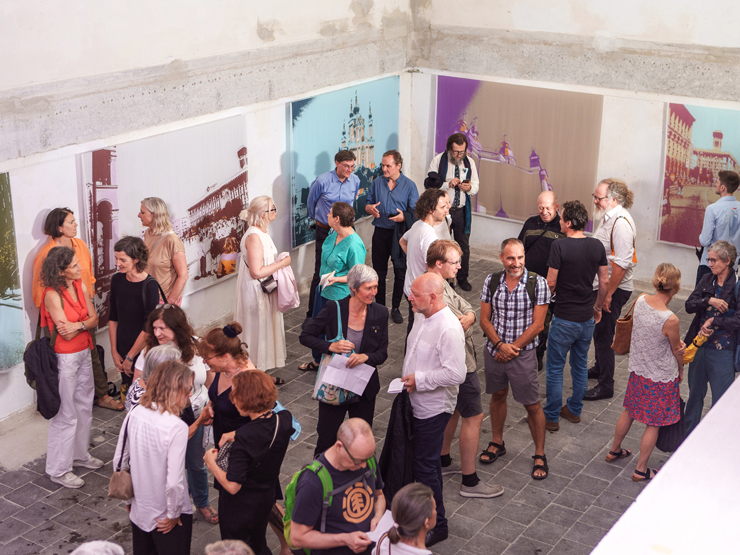morePlatz
architecture / urbanism / art / office / publications / contact deutsch
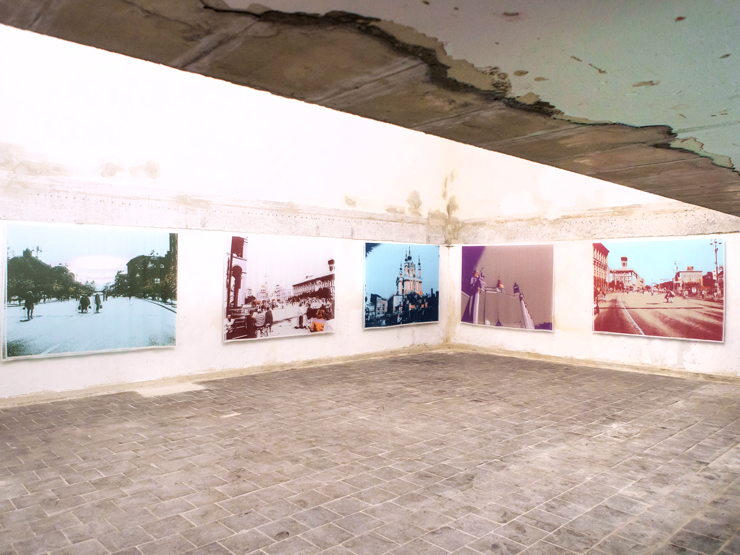
|
The Stelldichein! of the Bavarian State Opera connects the exhibition with the premiere of War and Peace by Sergei Prokofiev. We are guests in the former bunker on Blumenstrasse, which was built by the National Socialists as a civilian air raid shelter during World War II. The site has been open to the public since 2017: the Architekturgalerie München is converting the bunker and turning it into a place of building culture and art. Music:
|
Together with the Architekturgalerie, morePlatz and the Bavarian State Opera, the exhibition project makes the historical identity of the place tangible and at the same time reflects our time: the exhibition and music unfold on three floors of the Architekturgalerie. At the opening, works by Sergei Prokofiev and the Ukrainian composers Victoria Poleva and Anna Korsun will be performed. Lectures
|
 |
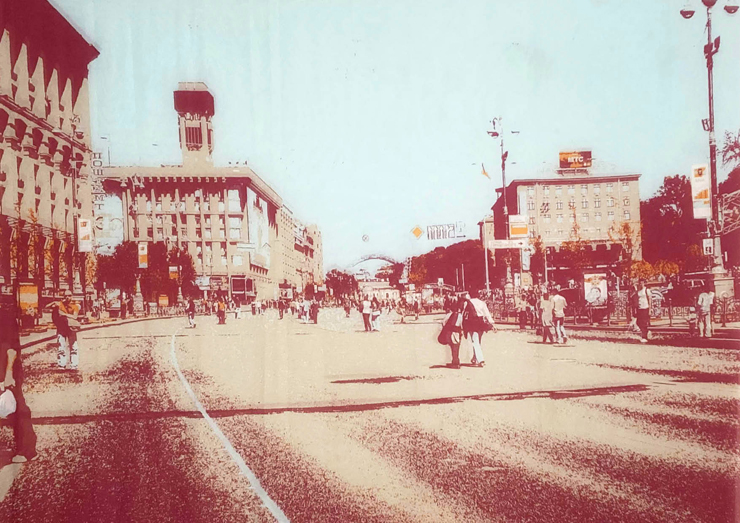
|
The occasion for the exhibition 'voina y mir' was the premiere of 'War and Peace' in the Bayerische Staatsoper on March 5, 2023. Khreschatyk South, textile print 200 x 150 cm |
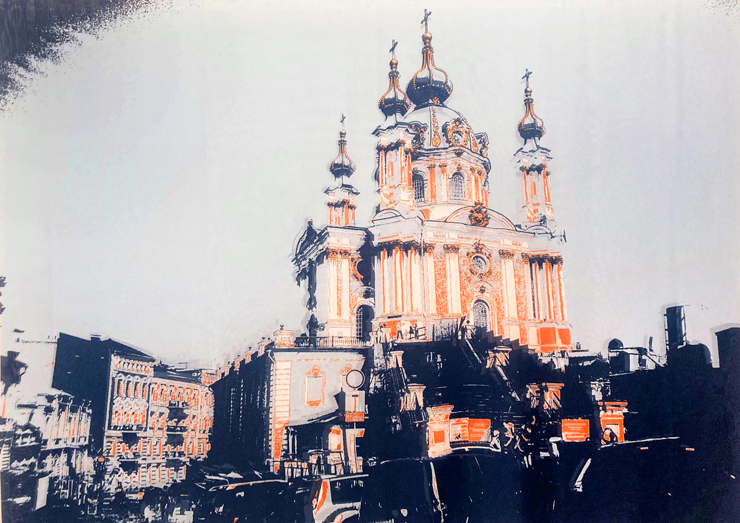
|
In contrast to 'Desastres de la guerra', views of Kiev during peacetime are shown on the second floor of the bunker. St. Andreas Church, textile print 200 x 150 cm |
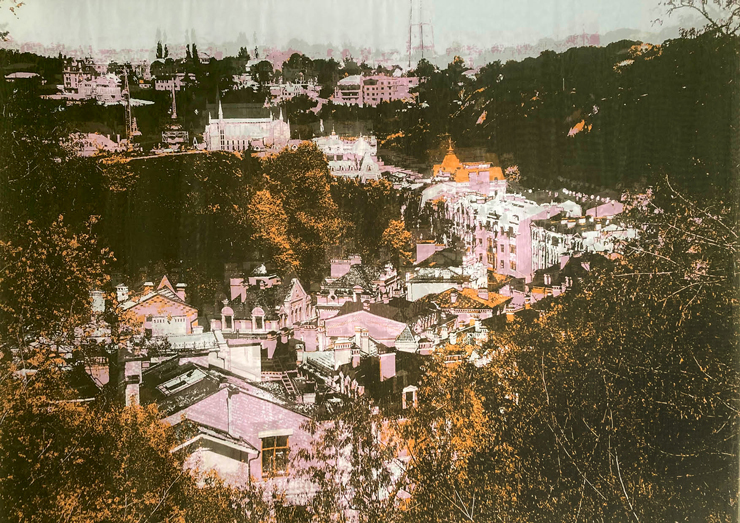
|
|
The photos were taken on a car-free Sunday in central Kiev, people strolling on the streets enhance the peaceful atmosphere. Andreassteig, textile print 200 x 150 cm |
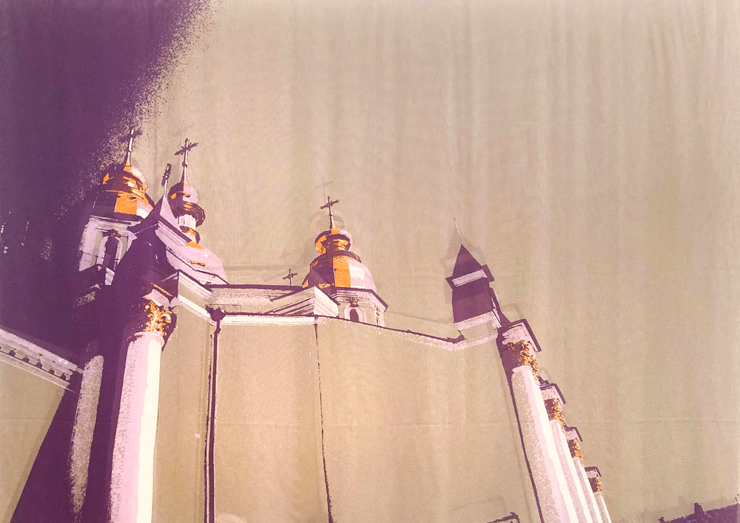
|
|
The exhibition offers a further level that deals with the political dimension of avoiding and preventing war. St.Michaelskloster, textile print 200 x 150 cm |
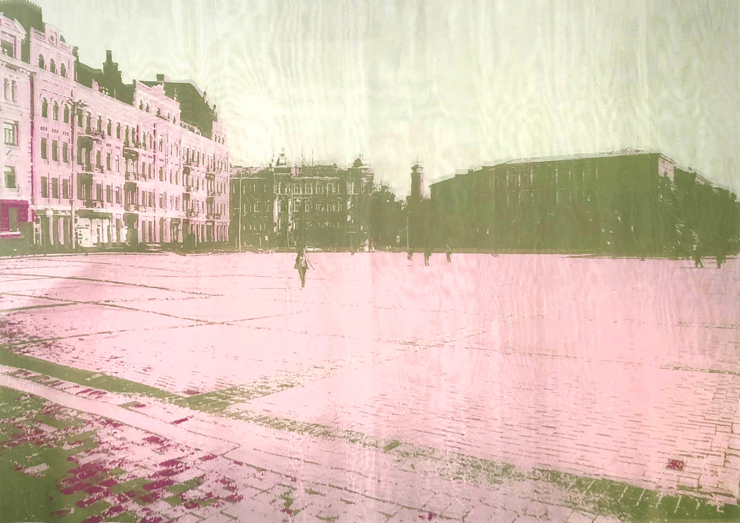
|
|
so that in the future 'all Members will actually settle their international disputes by peaceful means in a way that does not endanger international peace, security and justice' (Article 2.3) and 'refrain from any threat or use of force in their international relations against the territorial integrity or political independence of any State' (Article 2.4). St.Michaelskloster, textile print 200 x 150 cm |
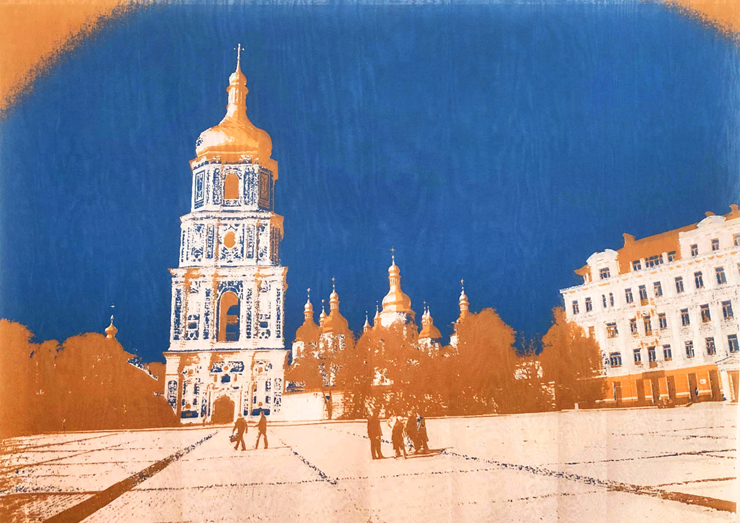
|
|
In addition to the city images, there are texts depicting the evolution of the idea of world peace over the centuries. Golden Gate, textile print 200 x 150 cm |

|
|
In Europe, Kant wrote his essay 'On Eternal Peace' 230 years ago, in which he listed six preliminary articles and three definitive articles that could lead to a global federal system based on the principle of non-interference. Ministry of Foreign Affairs, textile print 200 x 150 cm |
|
|
It is a well-known fact that the United Nations lacks the power to effectively carry out its tasks and that it would need a supranational constitution for the executive, legislative and judicial branches with worldwide legal validity. Khreschatyk - looking north, textile print 200 x 150 cm |
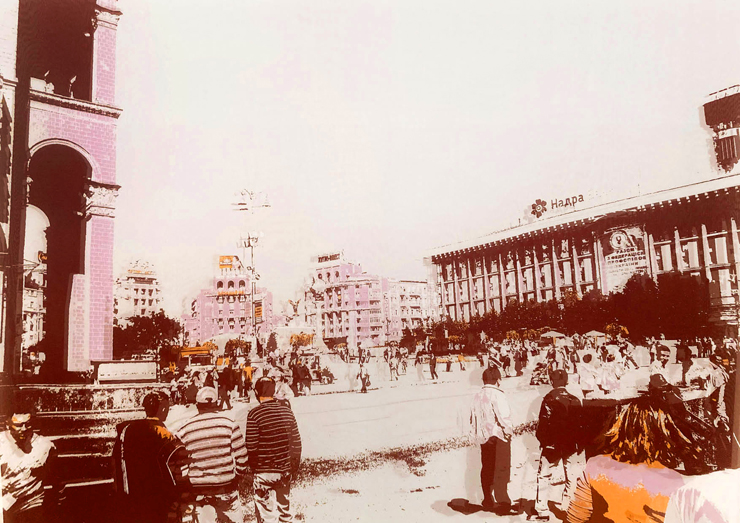
|
The book that historically derives the cosmopolitan vision of a world government, argues for it, explains it in detail and makes it plausible |
